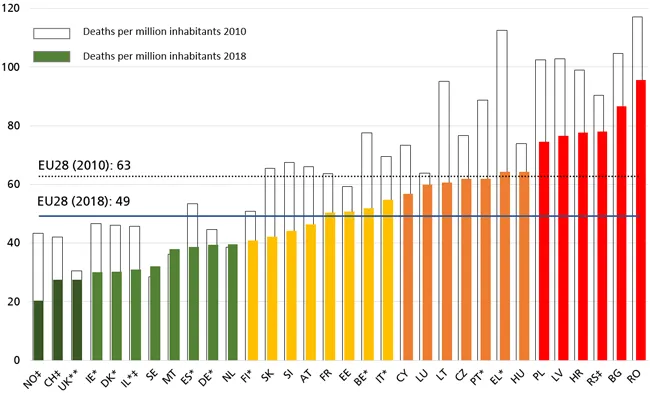Research has revealed that traffic congestion in Belgium is worse than in other parts of Europe and North America. The ranking covers all North American and European countries. The study shows that Belgian capital Brussels and the Belgian city of Antwerp have severe congestion problems. Milan in northern Italy is the other European city suffering severe traffic congestion according to the research. In Brussels and Antwerp drivers face an average annual loss of 72 and 71 hours, respectively, in traffic jams.
June 29, 2012
Read time: 2 mins
Research has revealed that traffic congestion in Belgium is worse than in other parts of Europe and North America. The ranking covers all North American and European countries. The study shows that Belgian capital Brussels and the Belgian city of Antwerp have severe congestion problems. Milan in northern Italy is the other European city suffering severe traffic congestion according to the research. In Brussels and Antwerp drivers face an average annual loss of 72 and 71 hours, respectively, in traffic jams. Data from international traffic information source 5367 INRIX reveals shows that the French spent 36 hours in traffic jams on roads, as much as in 2010 but more than the Spanish (34 hours), the British (32 hours) and less than the Belgians (55 hours) and the Dutch (50 hours). However, this figure of 50 hours for the Netherlands is a four hour decrease on 2010. Portugal saw the largest decrease in traffic congestion with 49% in 2011 year-on-year, due to the heavy impact of the financial crisis. Ireland and Spain also saw decreases of 25% and 15% respectively. According to the Inrix index, France is in sixth place in terms of European countries most affected by traffic jams. The worst times are 7-6 pm and Fridays. In Ile-de-France, drivers spent 58 hours in traffic jams in 2011, or three hours less than in 2010. Paris is the fourth most congested city in Europe, behind Milan, Brussels and Antwerp. In France, after Paris come Lyon and Bordeaux with 45 and 44 hours per year in traffic jams. In Strasbourg, drivers spent six hours less in traffic jams in 2011 compared to 2010.









